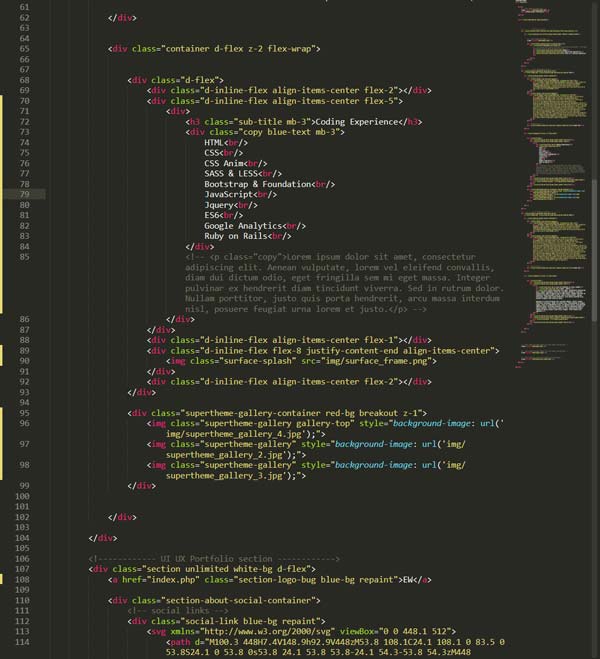Coding And Development
Responsivity
Accessibility
AI
CSS
CSS Anim
SASS & LESS
Bootstrap & Foundation
JavaScript
Jquery
Google Analytics
Datadog
Hardware Testing
As technology has grown in complexity and need, I've learned multiple languages, standards, and libraries to help build and prototype personal and professional projects.


Building For Accessibility
Accessibility isn’t just for government; by most accounts, between 15% and 25% of all adults have some form of disability. Designing and coding for accessibility are important to the modern world. I’ve spent years designing for clients with strict accessibility requirements, and I’ve worked within the WCAG standards for most of that time.
Building To Delight
UX doesn’t stop at the developer handoff stage. Much of what makes a design really sing can only be built in code by someone who has an understanding of design principles. In my career, I’ve worked with a lot of great full-stack developers who needed a little one-on-one time to grasp the complexities of CSS anims, screen painting, or bleeding-edge browser capabilities that allow for all that beautiful design work to make it to the users’ screens. On many an occasion I’ve even pair programmed or taken the lead on particularly thorny pieces of functionality.




In my career I've built over 50 websites, many from scratch or with a variety of component libraries, and many using proprietary CMS systems. From the very beginning I was learning how to think responsively, to create effective web experiences across any device and level of performance. I've also incorporated modern accessibility standards into many of my projects to allow them to reach any audience. In addition to the web, I've been on two separate teams building apps for iOS and Android.
